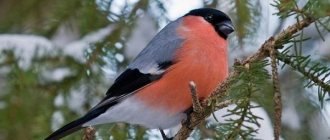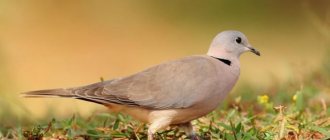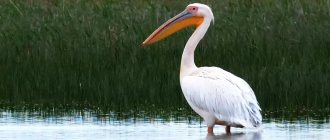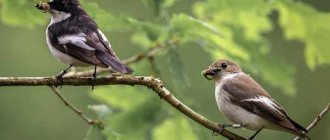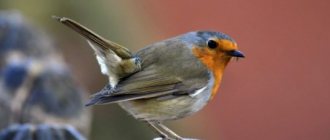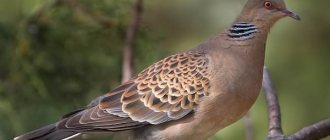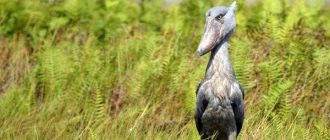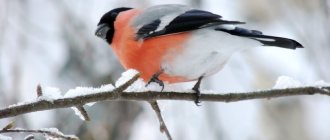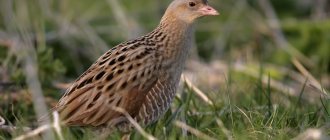The extensive family of finches is characterized by the fact that many representatives of this family have a very beautiful appearance. The goldfinch bird is just such a representative, since it has a rather variegated plumage color, and the melodic, pleasant voice of this bird allows you to keep it at home, enjoying singing. To all this it should be added that this bird has the makings of intelligence, so it quickly gets used to its owner. The maintenance process is not associated with difficulties. Living in the wild, goldfinches show themselves in quite an interesting way, since the behavior of goldfinches is very unique.
Description of the bird
The motley and songbird of the finch family got its name goldfinch (lat. Carduelis carduelis) for two reasons. The first of them is her unusually sophisticated and bright, smart outfit. The second reason relates to the bird's Latin name. “Carduus” in Latin means thistle, the seeds of which this handsome fellow loves to feast on.
How to distinguish the goldfinch from its no less vocal relatives in the finch family - siskins, redpolls, and greenfinches?
— Advertising —
This bird is also small in size, about the size of a sparrow. The weight of adult goldfinches is about 20 g, body length is up to 12 cm, and the wingspan is about 22-25 cm. Goldfinches have a very dense, compact body with a round head, a short neck and a sharp small beak.
Their main difference from other species is the presence of bright yellow, red, black and white colors in their plumage. An adult goldfinch has two decorations on its head - a cap of black feathers and a burning red beak border. Males have such a rim wider than females, thanks to which they can be distinguished, since they are otherwise the same. The goldfinch's cheeks are white, the back is brown, and the belly is reddish. Its tail and wings are jet black with yellow spots and white stripes.
Natural enemies of goldfinches
Photo: Goldfinch bird
The bright, unusual plumage of goldfinches is their main advantage among other birds. However, it often causes the death of a bird. With such colors, goldfinches are difficult to miss by predators. These birds are actively hunted by almost all types of birds of prey. Eagles, owls, hawks and other predators deftly catch small goldfinches right in the air or on the ground, where the latter are busy collecting food.
Other predatory animals are no less dangerous for goldfinches. Foxes, ferrets, weasels, and wild cats are also not averse to feasting on these birds. These predators have it more difficult. They hunt birds on the ground, where goldfinches look for insects or seeds for food. The difficulty is that goldfinches usually feed in flocks. The predator only has to take one careless step and the entire flock instantly flies into the sky.
Squirrels, crows, and woodpeckers are also enemies of goldfinches. These animals are mainly engaged in destroying nests. They attack defenseless chicks when their parents are not at home. Squirrels steal eggs. Sometimes pets can also harm birds. Cats can easily catch and eat a small bird. However, this happens extremely rarely. Goldfinches prefer to stay away from human houses. And, of course, the enemy of goldfinches is man. In some countries, people deliberately catch these birds for home keeping, but not everyone knows how to care for such an animal, and it quickly dies in captivity.
Nutritional Features
Like other members of the finch family, goldfinches are granivorous birds. In nature, they feast on the seeds of wild herbs - thistle, dandelion, burdock, sunflower, chicory, cornflower. The sharp and small beak allows goldfinches to even peck seeds, for example, from alder cones.
— Advertising —
Goldfinches feed their chicks with small insects. And they themselves sometimes add them to their diet.
Who threatens the goldfinches
Due to their bright, conspicuous plumage, goldfinches are constantly exposed to danger from other animals. The main enemies of goldfinches are:
- Predator birds. Hawks, eagles, owls and other representatives of birds of prey. They can grab a goldfinch both in flight and on the ground when the bird is looking for food.
- Predatory animals. Foxes, weasels, ferrets and other forest inhabitants are not averse to profiting from a small, noticeable bird. They are trying to waylay the goldfinch on the ground. The task of predators is complicated by the fact that goldfinches are usually found in a flock. As soon as one goldfinch notices the aggressor, the entire flock instantly flies up.
- Nest destroyers. These are squirrels, woodpeckers, crows. Defenseless chicks sitting in the nest can become their prey. And squirrels do not disdain even the eggs of birds.
- Human. He can also be counted among the enemies of these wonderful birds. Goldfinches have long been the object of capture for home cage keeping.
The hawk is the main enemy of the goldfinch
Distribution in nature and migration
Goldfinches have chosen many regions to live in. Europe, Asia, North Africa, the Caucasus, Western Siberia... Wherever this bird is found! But goldfinches do not like to migrate. Birds prefer habitable and familiar places, and therefore fly only in extreme cases of severe cold. Then goldfinches from northern latitudes travel to the southern latitudes.
In all areas of their distribution, goldfinches choose light edges of deciduous forests, parks, and gardens for living and nesting. They do not like dense thickets, but settle where there are a lot of grasses and weeds growing in order to get their food - various seeds.
Where does the goldfinch live?
Photo: Goldfinch in flight
All species of goldfinches have one thing in common - birds love freedom and choose open areas to live. This could be a rare garden, the edge of a forest, a deciduous grove. Climate does not play a special role for these animals. They easily adapt to different climatic conditions. The only exceptions are extremely low or extremely high temperatures. The decisive factor when choosing a habitat for such animals is the availability of suitable food and water nearby.
Goldfinches can be safely called sedentary birds. Only a small number of these animals leave their nests with the onset of cold weather and go where it is warmer. The rest remain to spend the winter in their homes. These animals are quite numerous and widespread. Their natural habitat includes: Russia, the Caucasus, Africa, Asia, and the western part of Europe.
Birds disperse unevenly. Thus, the largest number of them live in Europe, the least number of goldfinches live in Africa. The species of goldfinches also influences the distribution. Blackheads prefer to live and nest mainly in Europe. In Africa and Asia they are present in small populations. Grey-headed goldfinches live in Asia, Siberia, and Kazakhstan. In Europe they are quite rare.
Now you know where the goldfinch lives. Let's see what he eats.
Bird species
The two main types of goldfinches are the black-headed and the gray-headed. Thick-billed and Yemen goldfinches are also distinguished separately. In addition, there are many subspecies of this bird.
Black-headed goldfinch
The black-headed goldfinch is the most common species of goldfinch. Its main habitat includes Europe, Western Asia and North Africa. The black-headed goldfinch is also called common and is used to determine a kind of “standard” for the appearance of this bird. A small, knitted body, a black cap on its head, white cheeks, a red edging of its beak, black and yellow wings - this is exactly what the classic black-headed goldfinch looks like.
Grey-headed Goldfinch
Permanent resident of Asia and Siberia. It differs from its relative in its larger size and less bright color. The plumage of these birds is dominated by brown and gray shades, pure colors - white, black - are absent. But the red rim around the beak, like the calling card of the species, is also characteristic of the gray-headed goldfinch.
Population and species status
The genus of goldfinches is quite numerous and consists of a large number of species. Goldfinches are considered the most common species of birds representing the finch family. These birds reproduce quickly and quickly get used to various living conditions, with the exception of too low or too high temperatures, which is typical in the northern and equatorial zones. Goldfinches, compared to many other birds, are not on the verge of extinction and have a conservation status: “Species of Least Concern.” This factor is proof that in the near future the number of such birds will be at an optimal level, without causing any concern.
Populations of such birds living in the natural environment are at a stable level. As a rule, these birds lead a sedentary lifestyle. Generally speaking, the number of goldfinches is not declining, but if we talk about individual species, the number of some of the subspecies is declining, albeit slowly. The decline in numbers is due to a number of factors that negatively affect these birds. The main factor is massive deforestation and the use of chemicals on farmland. As a result of massive cuttings, birds lose both their homes and food sources.
Important fact! Living in the wild, goldfinches live no more than 8 years, but in captivity with proper care, they can live 10 years or more.
Some countries have begun to protect these unique birds at the state level, as they continue to attract the attention of exotic lovers. It should be noted that not everyone understands that wild goldfinches will always remain wild birds, and for keeping them in captivity it is better to buy goldfinches at a pet store.
Goldfinches are unique representatives of wildlife that can delight people not only with the bright color of their plumage, but also with their pleasant, mesmerizing singing. Like many other species of birds, goldfinches are real orderlies of forests, fields, meadows, and farmland, destroying many pests.
Differences between female and male goldfinches
Goldfinches have weakly expressed sexual dimorphism. The female is only slightly lighter than the male, but has a more melodic and iridescent singing. That is why songbird lovers are advised to keep female goldfinches. In addition, the red border around the beak of females is narrow and does not reach the eyes, unlike the male.
Goldfinches vary much more depending on their habitat conditions. Those that live in northern latitudes are usually larger and paler in color, while southern goldfinches are bright and small.
Habitat
The habitat area of goldfinches is quite large. They can be found throughout Eurasia with the exception of the northern regions, as well as in the north of the African continent.
Finland, Norway, Ireland, Portugal, Pakistan are just a small list of countries where this songbird lives. She also lives in our country.
Keeping a goldfinch at home
The goldfinch is not only beautiful and harmonious, but also has a peaceful and friendly character. This is why it is so popular among bird lovers as a pet.
For a handsome goldfinch you will need a cage at least 50 cm long with two levels and various perches and crossbars. In nature, goldfinches rarely fall to the ground; they prefer to always fly and be on the move, so it is important to create comfort for them at home. In addition, the goldfinch needs a lot of light and is afraid of drafts. All this must be taken into account when placing the cage. If the bird behaves restlessly at first, cover the cage with a light-colored cloth.
Goldfinches also need a large drinking bowl and a separate bathing container.
What does the goldfinch eat?
Photo: Male goldfinch
Goldfinches prefer to get their food in the company of their relatives. They rarely fly out to feed alone. Flocks of goldfinches are impossible to miss. Many bright, beautiful birds immediately catch your eye. Flocks of goldfinches usually look for food in gardens, fields, rural areas, and on the edges of forests. When searching for food, they are distinguished by dexterity and elegance. Goldfinches can move quickly even on thin branches to reach seeds or caterpillars.
The diet of goldfinches living in their natural environment includes:
- various harmful insects. These birds quickly and deftly clear forests, gardens, and agricultural crops from most types of pests. This quality of theirs is highly valued by people;
- seeds. They eat the seeds of cones, thistles, burdocks, and many other plants;
- plant food. If birds feel a lack of seeds and insects, then they can easily replenish their strength with plant food: leaves, thin stems, grass;
- larvae, caterpillars. They are used extremely rarely by adults. Such food is mainly obtained for feeding offspring.
Interesting fact: Goldfinches choose a certain territory for living and feeding, considering it their home. These small birds do not like competitors, so they can get into a fight with other birds who decide to have a snack in this place.
As noted earlier, goldfinches are often kept at home. To feed them, experts recommend using the following products: hemp seeds, pine, dandelion, plantain, mealworms, small insects, canary mixture, vegetables, herbs, fruits, eggshells. We must not forget about the importance of fresh water. These birds love water. It needs to be changed twice a day.
Diet for the goldfinch
The diet of goldfinches will be an equal mixture of seeds of spruce, pine, hemp, dandelion, sunflower, and plantain. Canary mixture is also perfect for goldfinches. During the molting period, add animal food - small insects and mealworms, mineral supplements - chalk, clay, shell rock, raw eggshells, green food - vegetables, fruits, herbs.
The birds are fed small portions twice a day. And in order to pamper the goldfinch, prepare a mixture of grated boiled carrots and eggs.
Goldfinches, like all granivores, need a lot of water, which is changed twice a day.
Goldfinch in captivity
As we have already found out, there are woodfinches. But today it is quite popular to have a feathered pet. Goldfinches are best suited for this role. This is due to the bright colors of the plumage, unpretentious diet and amazingly beautiful vocal qualities.
It is enough for a chick to hear the trill of an adult at least once in order to learn to sing amazingly as it grows. If you catch a goldfinch in the forest, it will very quickly domesticate and become tame. The bird also easily learns various tricks.
Goldfinch Breeding
If several male and female goldfinches are placed in a large cage, they can create pairs and breed offspring. The nest is built by a female goldfinch. To do this, she needs to put building material in the cage - feathers, blades of grass, pieces of bark, twigs.
In one clutch, the goldfinch contains up to 5 small bluish or greenish eggs, from which chicks are born after two weeks of incubation. They grow and become stronger for about 20 days, and then leave the nest.
What food does he prefer?
Goldfinches should be fed with ordinary grain mixtures. They are very popular with grain-eating birds. It is preferable that oil seeds predominate in such a mixture. The bird loves flax, burdock and rapeseed seeds.
In addition to grains, it is recommended to include various types of nuts (pine nuts) and pine tree seeds in the diet.
These birds like oatmeal, canary seed and even millet. You should know that seeds from a variety of weeds are very useful for these birds. Therefore, if possible, it is worth including dandelion, thistle or chicory seeds in your diet.
For balanced nutrition of birds, it is necessary to add greens to the feed. Moreover, these can even be small coniferous branches. Domesticated birds love all kinds of porridge, used for insect-eating species. If possible, you can offer the bird mealworms or ant eggs.
Poultry needs two meals a day. But you should pay attention to its plumage. If the color of the plumage changes (fades), it means that the bird’s nutrition does not correspond to the norm.
The basic diet must include:
- wood ash, activated carbon;
- coarse sand, clay;
- eggshells (raw) and chalk.
Summary and analysis of Donna Tartt's novel "The Goldfinch"
On September 12, 2019, a film adaptation of Donna Tartt’s novel of the same name “The Goldfinch” was released in Russia. The film was directed by John Crowley. Thanks to the wonderful acting, the film turned out amazing. But still not as deep and emotional as the book.
A little about the author
Donna Tartt is one of the best writers of the 21st century, winning a Pulitzer Prize for her novel The Goldfinch. She was born on December 23, 1963 in Greenwood, Mississippi, USA. At the age of 5, she already wrote her first poem, and at 13 her first publication was published. Donna Tartt is a rather secretive person. To date, journalists have been able to learn little about the writer’s life. What is known is that she doesn’t really like giving interviews, wears formal suits and prefers solitude. Tartt published her first novel in 1992. "The Secret History" immediately after its release became a worldwide bestseller and was translated into many languages. The writer’s second novel was “Little Friend” in 2002. And finally, in 2013, the beloved “Goldfinch” was born. He created a real sensation in the literary world. And drove many fans of the writer’s work crazy.
Summary of “The Goldfinch”
The novel begins with Theo (the main character of the story) remembering the most terrible events of his life. On April 10, Theo and his mother, by coincidence, ended up at the Metropolitan Museum of New York. His mother was an ardent fan of the work of Karel Fabricius, she especially liked the canvas with the image of a small goldfinch. Before he could leave the museum, Theo was deafened by the loud sound of a terrible explosion. When he woke up, he saw a little red-haired girl and an old man. The old man was seriously injured. Handing Theo the ring, he asked him to take the goldfinch with him and told him the address. Theo ran through the corridors looking for his mother. But thinking that she had already left, he went home, taking the painting with him. Arriving home, he hid the canvas and began to wait for his mother. But instead, there was a knock on the door from the guardianship service. It turned out that Theodora’s mother did not have time to leave the museum and died in the explosion. For some time, Theo was sheltered by the Barbours, the family of his best friend Andy. This was a secular family. Mrs. Barbour was an ardent admirer of art, her home was filled with antique furniture and many paintings by famous authors. Theo could spend hours admiring them. In addition to Andy, Mr. and Mrs. Barbour had three other children. But caring for Theo didn’t seem to be a burden to them. They fell in love with Theo and wanted to invite him to stay with them, when suddenly his father arrived and decided to take Theo with him. While in New York, Theo decided to go to Hobart and Blackwell, a small antique furniture store, and return the ring that the old man at the museum had given him. Arriving at the place, he knocked on the door of the store. An old man named Hobi opened the door for him. Theo handed him the ring and told him the story of how he came to have it. During the conversation, it turned out that the old man was Hobie’s business partner and died in that museum. But the girl who was with him that day (his granddaughter) remained alive. Hobi turned out to be an excellent conversationalist and just a good person. Since then, Theo often visited him and Pippa (the red-haired girl and the museum). They became great friends, but Theo had to go away. Together with their father and his mistress Xandra, they arrived in some abandoned area of Las Vegas and settled in a nice house with a swimming pool. It turned out that Xandra had a small dog named Popper, to whom Theo soon became attached. At a local school he met a rather mysterious guy, Boris. He was a little older than Theo and had lived in Russia for some time. His father was always away from home, and he and Theo hung out together all day long. It was he who discovered the joy of drugs for Theodore. They got drunk, smoked weed and swallowed wheels almost every day. Boris became his best friend, but Theo could not shake the thought that he was falling into the abyss with him. Some time later, Theo's father dies in a car accident. And to avoid the shelter, Theo runs away to New York. There he finds Hobi and stays with him. As an adult, he helps Hobie in the workshop, sells furniture, passing off fakes as originals. Hobie treats Theo like his own son. But despite all this, Theo still cannot recover from the terrible events of his childhood. He hid the painting in storage, away from prying eyes. This secret haunts him. He is afraid that his secret will be revealed. He still uses drugs in secret from Hobi, only they help him come to terms with reality. Some time later he meets Boris and learns a terrible thing. It turns out that a few years ago Boris stole a painting from Theo and now it is in the hands of some bad guys. Boris apologizes for a long time for what he did. Theo soon forgives him, and together they try to return the painting. Boris and Theo set a trap for the criminals, setting the cops on them. The story ends with the painting returning safely to the museum. And Theo is freed from the burden that has weighed on his heart for many years.
About the product
Despite this whole story with long-term drug addiction, childhood trauma and a terrible crime in the art world. “The Goldfinch” by Donna Tartt came out quite sophisticated and elegant. This work can be viewed from two sides. On the one hand, this is a novel about boundless love for art. Which describes the cultural value and significance of artistic works to society. This is also the place for the most sophisticated and cunning frauds in the field of art, with the help of which the heroes manage to earn a lot of money. On the other hand, this is the story of a little boy who lost his dearest person. Having lost his mother, he has to live with his irresponsible father and his mistress. Only drugs can help cope with loss. Prolonged depression and a lot of heroin accompany our hero until the very end of the book. This is a story about a hopeless situation. About childhood trauma, drug addiction, terrible depression and finding your place in the middle of all that “crap.” “How to live on if your world collapsed a long time ago?” This is the central question that the main character is trying to answer. Donna Tartt's novel simply amazes with its lightness, sincerity, sensitivity and novelty. This is truly an intellectual read. There is something to think about and something new to learn. It amazes with its depth and elegance. Penetrates into the very heart of the reader and evokes a great desire to walk along the corridors of an art gallery, plunging into the wonderful world of art.
How the goldfinch bird winters
The behavior of birds in the autumn season differs from subspecies. Some heat-loving species fly to warmer regions, but most birds, including the common goldfinch, remain in their range. Goldfinches group in pairs to make it easier to survive the cold winter.
Since the goldfinch bird can be described as small and fragile, it becomes clear why it is extremely rare to see it on the ground. Wary birds spend most of their lives flying and on the branches of tall trees.
What color are the feathers on the chest?
When comparing birds to determine sex, it is advisable to take individuals of the same age. The spots on the chest of goldfinches can also indicate the gender of the bird. It is necessary to inspect the bird's breast. In the male, the contrast between brown and white is stronger. Experienced birders give advice on how to distinguish a male goldfinch from a female:
- The sex of a bird can be determined by the presence of greenish or yellowish color in the males' chest feathers.
- Having caught a goldfinch, you need to take it in your hands and turn its belly towards you.
- Blow on the breast feathers where the brown spots are.
- If the feathers glow gray or brown, then it is a female.
- A green or yellow tint is visible on the underside - this is a male.
In some cases, there are birds that do not require feather blowing. The green color on the chest is clearly visible as is. You need to know that older females may have brighter colors.
Goldfinches that find themselves in captivity easily adapt to other living conditions and quickly become tame. They are undemanding when it comes to nutrition, are beautiful and play any melody beautifully.
The melodies of one's relatives once heard will certainly be performed in the future. And here you no longer need to look closely, but listen to the voice of the goldfinch. The difference in the performance of the trill is very noticeable. The female sings in a crackling voice. The goldfinch hums more pleasant melodies. The male stops singing when it is time to moult.
If the bird was recently acquired, it may remain silent for some time. However, it is considered unreliable and does not always allow this sign to distinguish a male goldfinch from a female. How to do this with 100% accuracy? Almost impossible. However, you will be lucky if you see goldfinches during mating season.
Interesting facts about the goldfinch bird
Goldfinches readily communicate with people, clearly distinguish intonations and are able to participate in dialogue.
If a goldfinch accidentally flies out of a window, it often returns to its owner’s house after a walk.
Even after the chicks leave the nest, they stay close to their parents for about a week, and they feed them.
Goldfinches can be crossed with canaries. If you put two species of birds in one cage, there is a high probability that they will give rise to common offspring. Hybrid chicks have bright plumage and sing very beautifully.
During molting (usually this happens in the spring), goldfinches become silent and begin to sing again only after their plumage has completely changed.
The beautiful and melodious goldfinch can easily become a decoration for your home and a faithful companion. Birds do not require special care; it is enough to place a spacious cage in a suitable place and provide the pet with proper nutrition.
Reproduction and nesting
Until the second month of spring, goldfinches prefer to stay in flocks of more than 40 birds. Birds fly short distances to find food. However, with the arrival of April, the friendly flock begins to disintegrate. During this period, temporary pairs are formed.
Nest creation continues until mid-May. The place for the development of offspring is always built on strong horizontal branches. In this case, the nest is located quite high.
The common goldfinch tries to create a cozy and beautiful home for its future offspring. You can see that the resulting nest is not only elegant, but also unusual. Externally, the small house is shaped like a cup with dense walls. Not only thin twigs, but also cobwebs and all kinds of roots are used as building material. The bottom of the nest is covered with poplar down, and to camouflage the housing, the bird adds pieces of moss and lichen to the nest. As a rule, the color of the finished goldfinch nest is similar to the color of the tree, making it completely invisible from the ground.
